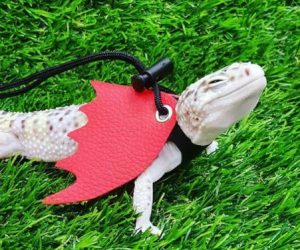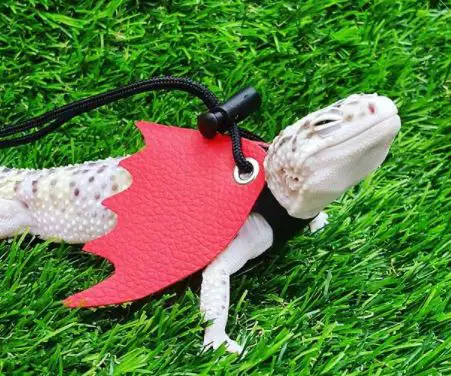Why is my leopard gecko pale
Why is my leopard gecko pale: Leopard geckos, scientifically known as Eublepharis macularius, have gained immense popularity as pets due to their captivating beauty and docile nature. Originating from arid regions of Afghanistan, Pakistan, and India, these small reptiles have become a favorite among pet enthusiasts worldwide. With their sleek bodies adorned in an array of vibrant colors and striking patterns, leopard geckos possess a unique charm that distinguishes them from other reptilian companions.
Brief Overview of Leopard Geckos as Pets
Leopard geckos are crepuscular creatures, meaning they are primarily active during dawn and dusk. Their nocturnal nature allows them to efficiently hunt for insects like crickets and mealworms, which form the foundation of their carnivorous diet. Unlike many other reptiles, leopard geckos do not require UVB lighting as they obtain the necessary vitamin D3 through dietary intake alone.
This characteristic makes them more suitable for those who prefer a low-maintenance pet. In terms of physical appearance, leopard geckos range in size from 6 to 10 inches long when fully grown.
Their bodies are covered in scales with distinct patterns that resemble leopard spots or stripes—hence their name. These remarkable patterns can vary widely among individuals and are often used by breeders to create unique morphs with specific colorations or markings.
Importance of Understanding the Health and Appearance of Leopard Geckos
 As responsible pet owners, it is crucial to familiarize ourselves with the health indicators and physical characteristics specific to our beloved leopard geckos. By doing so, we can monitor any changes in their appearance that may serve as early warning signs for potential health issues or distress.
As responsible pet owners, it is crucial to familiarize ourselves with the health indicators and physical characteristics specific to our beloved leopard geckos. By doing so, we can monitor any changes in their appearance that may serve as early warning signs for potential health issues or distress.
An essential aspect of maintaining a healthy leopard gecko is ensuring its proper coloration. A pale or dull appearance may suggest an underlying problem or deficiency.
Monitoring color changes can help us identify shedding cycles, detect stressors, and address any nutritional imbalances that may compromise these enchanting reptiles’ well-being. Understanding the fundamental aspects of leopard geckos as pets is essential for their proper care and overall health.
Their nocturnal habits, specific dietary requirements, and unique physical attributes make them captivating companions. By delving into their fascinating world and paying attention to subtle changes in their appearance, we can ensure an enriching and fulfilling experience while safeguarding their overall well-being.
Understanding Leopard Gecko Coloration
Normal coloration and patterns in leopard geckos
Leopard geckos (Eublepharis macularius) are renowned for their stunning colors and unique patterns, which make them captivating pets for reptile enthusiasts. These nocturnal creatures exhibit a wide range of hues, including shades of yellow, orange, and brown.
Some individuals may even have variations of white or gray. The natural coloration in leopard geckos serves multiple purposes, from camouflage to communication and thermoregulation.
The common colors observed in leopard geckos are often vibrant and eye-catching. Bright yellows can be seen on the body, while oranges or browns may adorn their backs and tails.
The intensity of these colors can vary between individuals due to genetic factors. Additionally, the patterns found on the skin of leopard geckos are a sight to behold.
They possess distinctive spots that usually cover the entire body, along with contrasting stripes on their tails. These markings are not only visually appealing but also aid in blending with their natural surroundings.
Factors influencing color changes in leopard geckos
Color changes in leopard geckos can occur due to various factors, including environmental conditions such as temperature and lighting. These reptiles are ectothermic animals whose body temperature fluctuates according to their surroundings.
Higher temperatures often result in darker pigmentation, while cooler temperatures may cause a lighter appearance. Lighting is another crucial factor influencing color changes in leopard geckos.
Proper exposure to ultraviolet (UV) light is essential for maintaining healthy skin pigmentation and overall well-being. Inadequate UV lighting can lead to pale or dull colors as well as negatively impact calcium metabolism.
Mood and stress levels also play a role in color variations observed in these fascinating creatures. Similar to humans experiencing blushing when embarrassed or turning pale when frightened, leopard geckos can exhibit changes in coloration due to emotional responses.
When stressed or anxious, they may appear paler than usual. It is important to provide a calm and comfortable environment for these reptiles to prevent unnecessary stress-induced color alterations.
Understanding the normal coloration and the factors that influence color changes in leopard geckos is crucial for ensuring their well-being as pet owners. By recognizing the wide range of colors and patterns they possess naturally, along with how environmental conditions and mood impact their appearance, we can better appreciate and care for these captivating reptiles.
Identifying Pale Coloration in Leopard Geckos
Definition of pale coloration in leopard geckos
Pale coloration in leopard geckos refers to a condition where their skin loses its vibrant and rich hues, appearing rather washed out or dull. Typically, these reptiles have a distinctive color pattern that includes bright yellows, oranges, and browns, accompanied by well-defined spots and stripes.
When a leopard gecko becomes pale, their natural colors fade or become less prominent. This change in coloration can be an indication of underlying health issues or environmental factors affecting the lizard’s overall well-being.

Observing physical signs of paleness
To determine if your leopard gecko is indeed pale, there are visible physical signs you can look for. One of the primary indicators is the loss of vibrancy in their skin tone and patterns.
Instead of the vivid colors they typically exhibit when healthy, you may notice a lackluster appearance with muted shades. Additionally, another sign is the lightening of normally dark areas on the gecko’s body.
This includes spots and even their tail, which might become noticeably lighter or even appear translucent compared to its usual pigmentation. These changes indicate that something may be impacting the distribution and production of melanin within their skin cells.
Comparison with a healthy specimen for reference
Comparing your pale leopard gecko with a healthy specimen can provide valuable insights into its condition. By observing other leopard geckos with vibrant coloration and comparing them side by side, the differences in appearance become more apparent.
A healthy leopard gecko will display intense hues on its body while exhibiting distinct patterns without any signs of paleness. However, it is crucial to consider individual variations within the species as some leopard geckos possess naturally lighter pigmentation overall.
Thus it is always ideal to consult a reptile veterinarian or an experienced breeder to confirm whether your gecko’s paleness is indeed concerning or simply a natural characteristic for that particular gecko. By paying close attention to these physical signs, you can better identify when your leopard gecko is exhibiting pale coloration, allowing you to take appropriate action and provide the necessary care to restore their vibrant appearance and overall health.
Possible Causes for Pale Coloration in Leopard Geckos
Shedding Process
Leopard geckos, like other reptiles, undergo a natural shedding process known as ecdysis. This process is divided into three stages: pre-shedding, shedding, and post-shedding.
During the pre-shedding stage, geckos may exhibit signs of paleness as their skin begins to separate from the new skin underneath. As the shedding stage progresses, their skin may appear dull or lack vibrancy due to the old layer starting to peel off.
This dullness is caused by moisture trapped between the two layers of skin. During post-shedding, once the old skin has completely shed off, the gecko’s coloration will brighten and return to its usual vibrancy.
Health Issues or Stressors
 Pale coloration in leopard geckos can also be indicative of underlying health issues or stressors. One possible cause is nutritional deficiencies resulting from a lack of a balanced diet. A diet lacking essential nutrients such as calcium and vitamins can lead to pale appearance in geckos.
Pale coloration in leopard geckos can also be indicative of underlying health issues or stressors. One possible cause is nutritional deficiencies resulting from a lack of a balanced diet. A diet lacking essential nutrients such as calcium and vitamins can lead to pale appearance in geckos.
It is crucial to provide them with a varied diet consisting of live insects (e.g., crickets and mealworms) dusted with calcium powder and supplemented with vitamin-rich foods like gut-loaded insects or commercially-prepared reptile supplements. Additionally, parasites or infections can contribute to pale coloration in leopard geckos.
These organisms disrupt normal bodily functions and deplete vital nutrients from their hosts’ systems. In cases where parasitic infestations or infections are present, it is essential to consult a veterinarian specializing in reptiles for proper diagnosis and treatment.
To sum up why is my leopard gecko pale
Pale coloration in leopard geckos may occur due to various reasons including shedding processes and health issues. Understanding the natural shedding cycle and its impact on skin appearance helps us differentiate between temporary paleness and potential health concerns.
Furthermore, providing a well-balanced diet with essential nutrients such as calcium and vitamins is crucial for maintaining vibrant coloration in leopard geckos. By addressing potential health issues promptly and ensuring optimal husbandry practices, we can ensure the well-being of these beautiful reptiles and admire their stunning colors to the fullest extent.


